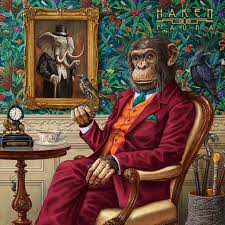Stamp: Aparicio's Lancers (Uruguay 2016)
Aparicio's Lancers (Uruguay 2016)
08 March (Uruguay ) within release Famous Women series 2016 goes into circulation Stamp Aparicio's Lancers face value 20 Uruguayan peso
| Stamp Aparicio's Lancers in catalogues | |
|---|---|
| WADP Numbering System - WNS: | WAD:UY005.16 |
Stamp is vertical format.
Also in the issue Famous Women series 2016:
- Stamp - Enriqueta Compte y Riqué face value 20;
- Stamp - Aparicio's Lancers face value 20;
- Stamp - Women against gender-based violence face value 20;
|
Data entry completed
80%
|
|
|---|---|
| Stamp Aparicio's Lancers in digits | |
| Country: | Uruguay |
| Date: | 2016-03-08 |
| Size: | 30 x 42 |
| Perforation: | 13 by 13 |
| Format: | Stamp |
| Face Value: | 20 Uruguayan peso |
Stamp Aparicio's Lancers it reflects the thematic directions:
The horse (Equus ferus caballus) is one of two extant subspecies of Equus ferus. It is an odd-toed ungulate mammal belonging to the taxonomic family Equidae. The horse has evolved over the past 45 to 55 million years from a small multi-toed creature, Eohippus, into the large, single-toed animal of today. Humans began to domesticate horses around 4000 BC, and their domestication is believed to have been widespread by 3000 BC. Horses in the subspecies caballus are domesticated, although some domesticated populations live in the wild as feral horses. These feral populations are not true wild horses, as this term is used to describe horses that have never been domesticated, such as the endangered Przewalski's horse, a separate subspecies, and the only remaining true wild horse. There is an extensive, specialized vocabulary used to describe equine-related concepts, covering everything from anatomy to life stages, size, colors, markings, breeds, locomotion, and behavior.
Fauna (pl.: faunae or faunas) is all of the animal life present in a particular region or time. The corresponding terms for plants and fungi are flora and funga, respectively. Flora, fauna, funga and other forms of life are collectively referred to as biota. Zoologists and paleontologists use fauna to refer to a typical collection of animals found in a specific time or place, e.g. the "Sonoran Desert fauna" or the "Burgess Shale fauna". Paleontologists sometimes refer to a sequence of faunal stages, which is a series of rocks all containing similar fossils. The study of animals of a particular region is called faunistics.


